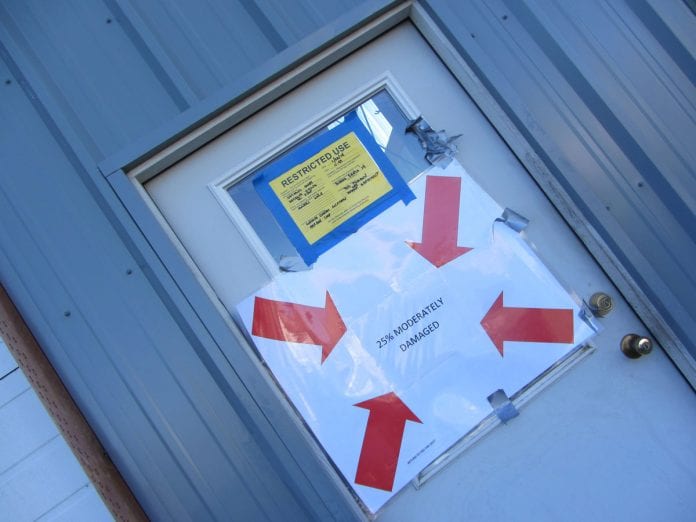
This was a drill! We had 10 minutes to get everything out of the fire hall before the wave hit. And we all had to respond directly from home, as if it were the real deal.
April 14 was the culmination of a few months of planning, preparing, postulating and then playing, as Cordova Volunteer Fire Department executed another exercise in preparation for a possible tsunami.
PLANNING:
First you plan, by creating a challenging scenario. The scenario chosen was a large (simulated) landslide in Nelson Bay, generating a massive wave that would hit Cordova in 10 minutes.
Could this happen? Yes, it could. There is a fault in that area. Local experts estimate the wave would take 10 minutes to arrive, but would only be one foot in height, not the massive wave we trained for. Regardless, we chose to see what we could do with those precious 10 minutes.
The idea for this drill came from Cordova ham radio operator Ralph Bullis, as he viewed the movie by the same title. The film, based on a real-life incident in Norway, is a sobering look at what can really happen.
PREPARING:
Cordova prepared for this exercise by alerting everyone that the siren was going to go off at 9 a.m. on Saturday, April 14 and to encourage everyone to consider what their plan would be. Volunteer Samantha Renner visited businesses during the week prior to the event, encouraging them to participate.
Cordova school staff prepared by participating in a class entitled Stop the Bleed, instructed by First Care Providers and paid for by the state of Alaska, for citizen responders. They learned to use tourniquets and safely move people out of danger. More than 40 residents attended the expanded version of the same class later that evening.
Lastly, the Cordova Police Department, State Troopers, U.S. Forest Service Law Enforcement, and 20 fire department members spent the following day learning to respond as one team in a dangerous situation.
There was lots of preparation for this exercise.
POSTULATING:
Sitting around a table with James Thorne, CVFD training officer, deciding what the challenges would be in a scenario like this one and which one to incorporate into the exercise. James chose to test skills in bleeding control, propane leakage and overturned vehicle response.

Photo by Kari Collins
PLAYING:
CVFD members were expected to respond to the fire hall and remove as much of our equipment and supplies as possible in that 10-minute timeframe. Twelve members “lived” through the event, while a few others and two big rigs did not make it up the hill in time. We learned that we need more qualified drivers who live close enough to the fire hall to move all those big engines.
Cordova Dispatch participated too. Their office, and all our radio equipment, is still located in the tsunami zone (down at the old City Hall) so they had to move uphill to the Cordova Center. For a few minutes, 911 was down as they raced up the hill to safety. Communications were reestablished within minutes. This is no small feat. Young community members pretended to be tsunami victims, complete with spurting blood, moans, groans and broken bones.
The Cordova Amateur Radio Club also participated, providing their radio skills. It was their job to peruse the harbor area and report damage. How could they report damage when there were none? That’s where our new City Council member, Ann Schaefer came in. She talked to local businesses and put up huge signs on pre-designated buildings that described what had happened to those buildings in the tsunami. As the radio club members drove the roads, and spotted the signs, they reported the damage to the Emergency Operations Center.
“Playing,” which is a common emergency management term for conducting an exercise, continued with the equipment that was saved. Members gathered around a “tabletop exercise” and James informed them of challenges they now faced with their limited resources. They took turns being the incident commander and the staging officer. They went to Harborside Pizza and saved four young victims from bleeding to death, they stopped the propane leak, and they dealt with the overturned car.
All in a day’s work. Everyone “playing” together nicely.














